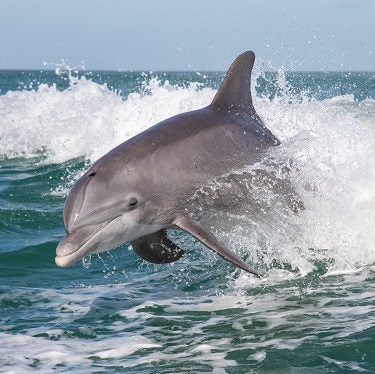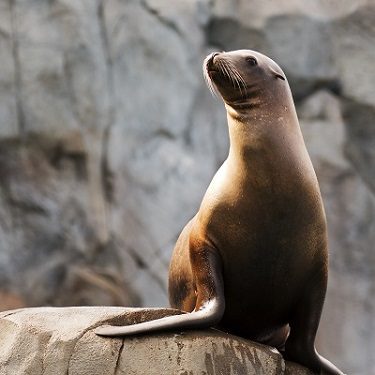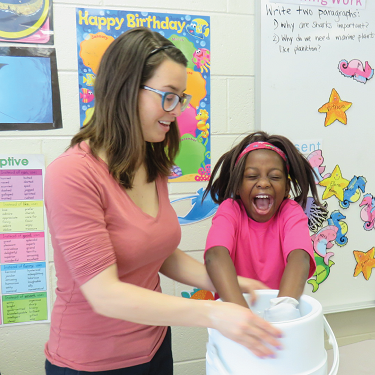Marine Life Encyclopedia
Corals and Other Invertebrates
Yellow Tube Sponge
Aplysina fistularis
Distribution
Tropical western Atlantic Ocean from Florida (and Bermuda) to Brazil, including the Gulf of Mexico
eCOSYSTEM/HABITAT
Coral and rocky reefs
FEEDING HABITS
Filter feeder
TAXONOMY
Phylum Porifera (sponges)
The yellow tube sponge is a relatively large sponge (to over 3 feet/1 m) that lives on coral reefs around the Caribbean Sea and its adjacent waters. The common name is an accurate description of the species, with individuals typically having a yellowish color (sometimes almost iridescent yellow-blue at deeper depths) and consisting of one or more tube-like structures
These tubes are open at the top and closed at the base and provide habitat for many other species of invertebrates (including crabs and shrimps) and reef fishes (including gobies and cardinalfishes). Yellow tube sponges, like all sponges, are attached to the reef surface and are unable to move. If pieces of an individual are broken off by predators or during a storm, they can reattach and begin growing a new sponge.
Together, the sponges make up one of the oldest, most primitive groups of animals on Earth. Sponges have existed for at least 500 million years. Sponge cells do not have specialized purposes. Each of a sponge’s individual cells can transform to complete the job of any other cell in the body. This lack of specialization means that sponges do not have tissues, like every other type of animal. In fact, in laboratory settings, a sponge that is destroyed in a blender can reform itself as the cells swim back together and take on the form and job needed for recovery. Yellow tube sponges feed by filtering water through the body wall, trapping food particles and excreting waste materials into the inner bowl or tube. The, now filtered, wastewater exits the sponge through the large opening at the top (called an osculum). They also obtain oxygen from the water during this process.
Some species of reef fishes eat yellow tube sponges, but the primary predator is the hawksbill turtle. Yellow tube sponges reproduce both sexually and asexually, with asexual reproduction typically occurring only when storms or other disturbances break off part of the body. Newly settled sponges (resulting from either sexual or asexual reproduction) require a hard surface to which they attach and begin to grow. On heavily disturbed reefs, where sediment or algae cover most hard surfaces, the yellow tube sponge can struggle to establish itself.
Most sponges have a glass-like skeletal structure made of silicates, but the yellow tube sponge does not. Consequently, it has been collected for use as a bath sponge in the past. Fortunately for this species, synthetic sponges have eliminated the market for its fishery, and it is only rarely collected today. However, because this species lives mostly on coral reefs, changes to that fragile system caused by irresponsible human behavior may threaten the yellow tube sponge.
Engage Youth with Sailors for the Sea
Oceana joined forces with Sailors for the Sea, an ocean conservation organization dedicated to educating and engaging the world’s boating community. Sailors for the Sea developed the KELP (Kids Environmental Lesson Plans) program to create the next generation of ocean stewards. Click here or below to download hands-on marine science activities for kids.
Get Involved

Donate Today
SUPPORT OUR WORK TO PROTECT THE OCEANS BY GIVING TODAY
With the support of more than 1 million activists like you, we have already protected nearly 4 million square miles of ocean.

TAKE ACTION NOW
Support policy change for the oceans
Decision-makers need to hear from ocean lovers like you. Make your voice heard!

VISIT OUR ADOPTION CENTER
SYMBOLICALLY ADOPT AN ANIMAL TODAY
Visit our online store to see all the ocean animals you can symbolically adopt, either for yourself or as a gift for someone else.

DOWNLOAD OCEAN ACTIVITIES
HELP KIDS DISCOVER OUR BLUE PLANET
Our free KELP (Kids Environmental Lesson Plans) empower children to learn about and protect our oceans!




